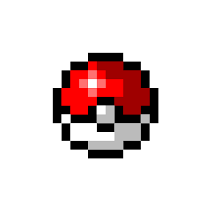"Clefairy spawnrate decreased. How can we know that?"

#PokemonGO: It's been theoricized theorized that spawns are sorted by dex number. I'd say not only that but also their spawnrates. Think of it this way:Each species has a basic spawnrate represented by points. Biomes add and take points for each species, and so do weather, day/night and events. When all is set, points are juxtaposed in order to form a giant ruler. More common species occupy a larger portion of the ruler.When a spawnpoint produces a new spawn, a random number is generated to pick a spawn acording to its position in the ruler (let's call it a pointer). If the pointer is at a low percentage of the ruler's total length, a species from gen1 is more likely to be picked for instance.When the start or end of an event changes spawns on the map, what is happening is actually a change in the ruler's composition of spawns and their spawnrates, but the pointer stays at the exact same position. An interesting phenomenon takes place in this moment.Whenever a pokemon's spawnrate is increased, it occupies a larger portion of the ruler and pushes other pokemon outwards. Since the pointer stays in the same position, it looks like the pointer is going toward the increased species instead. Thus, the result is that species converge to the increased species, become it if they are close enough, or simply don't change if they are far enough.On the other hand, whenever a pokemon's spawnrate is decreased, it occupies a shorter portion of the ruler. This causes every other species to automatically occupy a slightly larger portion of the ruler. Since the pointer stays in the same position, that means species diverge from the decreased species. Some of the spawns that were the species whose spawnrate was decreased become neighbor species while others remain. Of course, this can get very complex if more species' spawnrates get changed in the same event.At midnight where I live, nearby spawns from map and radar changed like this:#13 Weedle > #13 Weedle#21 Spearow > #19 Alolan Rattata#29 Female Nidoran > #23 Ekans#35 Clefairy > #37 Vulpix#56 Mankey > #58 Growlithe#58 Growlithe > #58 Growlithe#58 Growlithe > #58 Growlithe#58 Growlithe > #58 Growlithe#191 Sunkern > #198 Murkrow#191 Sunkern > #198 Murkrow#198 Murkrow > #200 Misdreavus#206 Dunsparce > #209 Snubbull#209 Snubbull > #214 Heracross#216 Teddiursa > #216 Teddiursa#228 Houndour > #228 Houndour#337 Lunatone > #337 LunatoneAs you can see, two spawns with lower numbers than Clefairy became even lower while the other spawns with higher numbers became even higher. Some remained. Clefairy itself changed to a neighbor species. This is evidence for Clefairy's spawnrate being decreased.Other little changes to spawnrates might have occurred at the same time so we don't know for sure how exactly spawnrates changed. However, if other trainers pay attention to what species changed to what in the next hours, we can have a better understanding of how it actually works. Please share your experiences in the comments. via /r/TheSilphRoad https://ift.tt/2VaVPVv
"Clefairy spawnrate decreased. How can we know that?"
!["Clefairy spawnrate decreased. How can we know that?"]() Reviewed by The Pokémonger
on
10:05
Rating:
Reviewed by The Pokémonger
on
10:05
Rating:


No comments